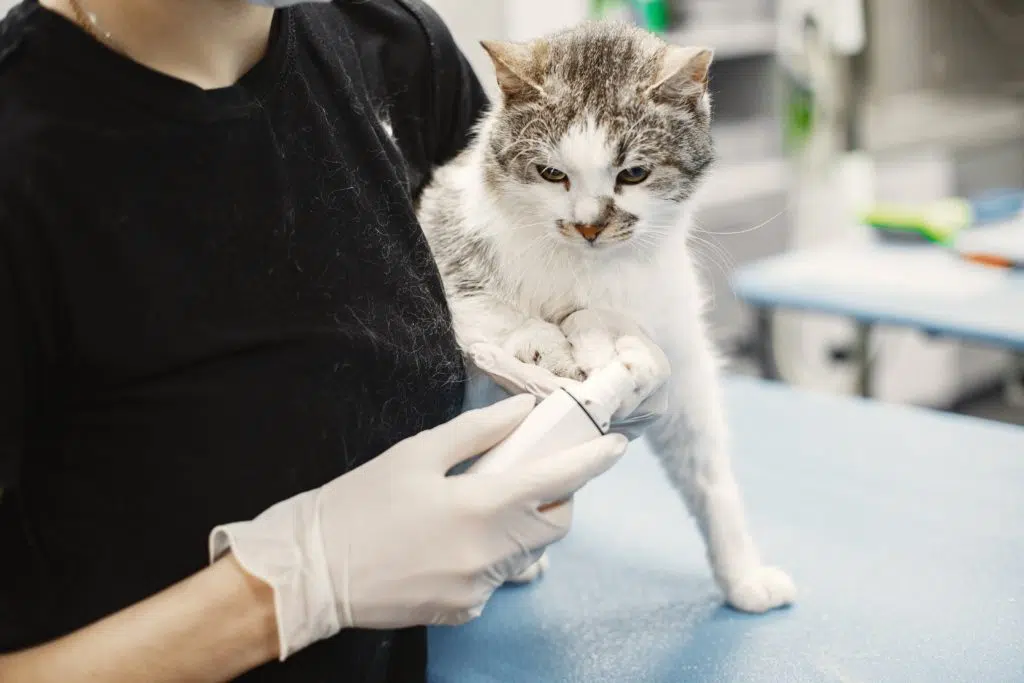Veterinary practice management software has become a handy tool for improving veterinary services worldwide. As technology has helped improve human healthcare, animal healthcare has not lagged behind. Today, veterinarians and their clinics and practices can harness the power of technology to make their jobs easier while also being more effective at what they do.
Veterinary software could very well reach $2 billion in industry valuation by 2027. With this inevitable growth coming into the industry, veterinary practices should start maximizing available technology to streamline animal healthcare. One such software they should start using is vet information management software.
Benefits of Information Management for Veterinary Clinics
A veterinary information management software or VIMS is one of the best veterinary practice management software available today. It helps keep all information pertinent to animals in care, treatments, cases, and so much more in one reliable portal.
A VIMS can help improve a veterinary clinic’s operation immensely. Here are some of the ways that it’s able to do that.
It saves time and effort
When using veterinary information management software, a veterinary team cuts the time and effort spent filing, logging, and looking for information related to a patient. Having a manual system— the more prevalent alternative— can often result in hours simply searching through file cabinets for a patient animal’s file.
A digital database will allow you to store and access files instantaneously, making it much easier for your team. That way, your veterinary professionals will avoid getting overwhelmed due to faulty systems.
Better patient management
Patient management is undeniably a crucial part of any healthcare operation. This is true in the case of human healthcare and does not change at all with animal healthcare. In fact, patient management can arguably be more crucial in veterinary practices.
With human healthcare, doctors and medical staff only have to care for one species— humans. With veterinarians, the patient pool becomes a whole lot more diverse. Hence, it makes absolute sense for patient management to be a pain point in a veterinary practice. But a veterinary practice will have an added advantage with a VIMS that automates file storage, search, updating, and so on.
Vet Information Management Software improves the quality of healthcare
Overall, what technology has done for the healthcare system has been nothing short of admirable. With medical technology growing, healthcare has undoubtedly improved. The same is true for veterinary care.
As technology streamlines medical professional workflows, patients end up receiving better care in the process. Moreover, automated systems like veterinary information management software help lower human errors, contributing to an improvement in veterinary practice.
Considerations When Evaluating Vet Information Management Software
So for any practice that wants to adopt an information management system or evaluate their existing one, here are some considerations:
Technological fit
Simply having any technology will not suffice for a veterinary practice. There is such a thing as technological fit. First and foremost, the technology must fit the specific pain points of a clinic. What problems is your veterinary practice facing with your current system (whether manual or automated)?
Some common pain points might include:
- Lack of categorization system;
- Poor communication;
- Patient record filing system;
- Storage for PACS for veterinary radiologists;
- Information silos;
- Poor data management;
- Bad data security;
- And many more.
Determine the specific pain points your clinic currently faces and determine what features your information system must have to solve those issues. For instance, if there is poor categorization in your practice, search for a system with a good folder and categorization system. Hand in hand with that should be a quick search feature that allows you to treat your patient information system like an internal search engine.
User experience
A program’s user experience is crucial to your team’s success at running digital veterinary information management systems. A system with poor design, navigation, or overall usage issues will only cause operational roadblocks for your team. Some things to consider when evaluating a veterinary information management system, include:
- Dashboard design;
- File and data organization;
- Site speed;
- Having few to no errors;
- Visual experience; and
- Navigation.
Client experience
On top of having a good experience for the veterinary team, the system should also have a good client experience, especially if clients will interact with your system at some point.
This consideration is also true for many other patient management systems, including scheduling software or booking systems. Veterinary clients now have the option to book an appointment with a specialist without human interaction. This is through scheduling software that they can use. Here is a list of scheduling software if you want to try using one for your veterinary practice.
In essence, all patient-facing communications and dashboards should also have a good user experience. This will also ensure that you get to deliver better client care.
Accessibility and Mobility
As mobile devices become the norm, mobility and accessibility become an important part of the software, including VIMS. It will be an added bonus if your mobile veterinary software has an app available for use on smartphones or gadgets so your medical staff can move around with the software on hand.
The minimum that a software should have is a mobile responsive website. Compatibility to different mobile devices should also be a high consideration.
Integration with other systems
Chances are that a patient information management system isn’t the only software you will use in your veterinary practice. You might also use other systems, including payment softwares or a customer relationship management system of sorts.
When using other softwares, you’ll want them to integrate well with each other. So consider using veterinary information management software that integrates well with other tools and vice versa. Integrations with a CRM are highly recommended as this tool could come in very handy when getting leads and prospects for new clients and performing other important tasks such as email mailouts and virtual patient support. Check out Netsuite CRM reviews to see if this could work well with your patient management system.
Support and Tech Maintenance
Hoping and wishing that your practice information management system will run forever without issues is wishful thinking. So it’s also important to choose a tool that gives adequate client support to veterinary practices.
At the bare minimum, a software provider should have email support. It would be an added bonus if they had chat support available to you when you need more assistance. Some software providers might go out of their way by providing a dedicated account manager or representative and give 24/7 support. But in some cases, this could only be available in higher plans of service.
Business intelligence insights
Private veterinary practices need to think about the business aspects of their practices too. So having an information management system that can provide business insights, such as accounts receivable, revenue, expenses, and so on, can provide many business benefits for a veterinary practice.
Choose a system that provides these analytics instantaneously and can give you reports for various periods. Being able to export those analytics and send them to stakeholders will be a great advantage.
Future of Veterinary Practice
As cloud-based veterinary practice management software continues to grow in popularity, the future of veterinary practices becomes brighter. The point of technology is to make people’s lives easier. And undoubtedly, a veterinary information management system is able to do that.
Book a Demo of Keystone Omni Now
Submit images directly through Asteris Keystone or via our free and simple Asteris Keystone Community application.
Blog
the latest Updates from Asteris
If you like this post you might like this
Subscribe to our newsletter
don't miss out the updates
from asteris
Sign up to our newsletter to stay in the loop.


